| hydroponicsonline.com |
LESSON SIX |
|
Seed Germination 6 -5 |
Light
(see Lesson 7 for more information on lighting):
The first few days of seed germination (the time prior to the radical root emerging) can take place in the dark. After that time, light must be provided. If proper light is not provided, a
plant will grow tall and spindly as it reaches for the light. This is often referred to as "stretching." Young plants will quickly do this. For seedling growth, having at least 500 foot candles
of light is required. This can be either natural or artificial light. If artificial light is used, set a timer that turns the light on for 16 hours and off for 8 hours of each day. Plants do need darkness as part of their daily cycle, so do not leave the light on all of the time.
Choosing What Plants To Grow
When choosing the plants you will grow in your hydroponic garden, you should choose plants that have similar needs to grow together. For instance, a tomato and cucumber plant have
similar needs in temperature, light and nutrient requirements. Lettuce and basil also have like
needs.
Since your garden can hold a limited number of plants, be sure to plan what you will grow prior to planting. Schedule regular seeding for plants like lettuce and radishes for a continuous
harvest.
Basil:
Basil is a fast growing, hardy herb that is an excellent choice for a
hydroponic garden.
Once a basil plant is 12 -18 inches tall, cuttings can be taken. Remove any
flowers or
buds to encourage continuous leaf production. A basil plant will produce
fresh growth
for 3 -4 months and then should be removed from the system and
replaced with a new
plant. |
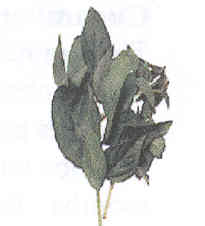
|
Like needs: lettuce, spinach
Days to germinate: 6 -10
Beans:
Beans do well in a hydroponic garden. They grow rapidly and produce
high yields. Beans will grow well in an Ebb and Flow system with a loose
growing medium such as perlite or expanded clay pebbles.
If climbing beans are planted, you will need a trellis for support. Beans
will
generally produce in about 6-8 weeks, with total time in the garden
about 3-4 months.
Like needs: peas
Days to germinate: 3 -8 |
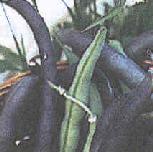
|
Broccoli
Broccoli, like cabbage or cauliflower, likes cooler temperatures. If
these are crops you want to grow, they should be grown together in
an area where cooler temperatures can be maintained. Broccoli is
slow to germinate and develop. Time from seed to harvest is about
4 months.
Like Needs: cabbage, cauliflower |
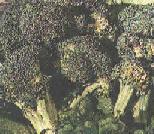
|
Carrots:
Carrots, and other root crops will do well in a hydroponic garden as
long as they have a large enough grow bed to mature and fully de-
velop. A loose growing medium, like perlite, works best for root
crops.
Carrots will be ready to harvest in about 2-1/2 -3 months.
Like needs: radishes, beets, leeks
Days to germinate: 6 -10 |

|
Cucumbers:
Their rapid growth and high productivity make cucumbers an ex-
cellent choice for a hydroponic garden. The European seedless
varieties are great tasting and easy to grow. These varieties will
produce cucumbers at about 6 weeks and continue to grow up to 6
months. Being along term crop, cucumbers will do best in a drip
system with perlite or rockwool as the growing medium.
Pick the cucumbers regularly to encourage continuous production. |
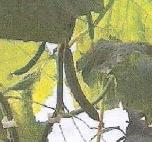
|
Plant support will be needed for cucumber plants. The cucumber plant will be
quite large so provide adequate space if you choose to grow them.
Like needs: tomatoes, peppers
Days to germinate: 3 -5
Lettuce:
Lettuce and leaf crops do very well in a hydroponic garden. Leaf let-
tuce generally will do better than head lettuce. Lettuce will grow best
in an NFT system, but will also grow in an ebb and flow or drip sys-
tem.
Most lettuce varieties will be ready for harvest in 35- 45 days. |
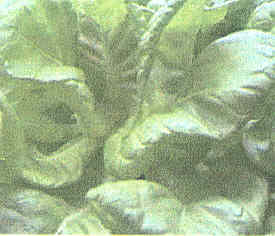
|
When harvesting, you can remove just the leaves you need or you can harvest the whole plant. If you are harvesting the whole plant, remove the root ball with the plant and refrigerate to store.
Seed lettuce every few days for a continuous supply.
Like needs: basil, leaf crops, spinach
Days to germinate: 4 -8
Peppers
Any kind of pepper, hot or sweet, will do well in hydroponics. The
only draw back is that it may take up to 4 months to harvest. The best
growing system for peppers is a drip system. They will also do well in
an ebb and flow system.
There are many varieties of peppers available in a wide range of colors
and flavors.
Like needs: tomatoes, cucumbers
Days to germinate: 10 -14 |
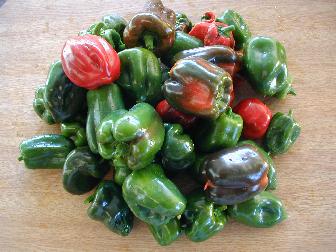
|
Radishes:
Radishes will do well in hydroponics as long as they have a grow bed deep enough to accommodate their growth. Radishes
germi- nate and grow very quickly. Most radish varieties will mature in 30 -40 days. Continuous planting will give you a steady supply.
Radishes will do well in an ebb and flow or drip system with perlite
or expanded clay pebbles as the growing medium.
Like needs: carrots, beets, leeks
Days to germinate: 2 -5 |
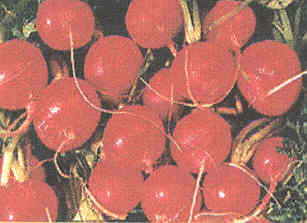
|
Spinach:
Spinach grows well in a hydroponic garden. An NFT or ebb and flow
system will both produce good results.
Spinach is slower to germinate and grow than lettuce, with harvest at
approximately 50 -60 days.
Spinach leaves can be harvested as you need them or, like lettuce, the
whole plant with the root ball intact can be harvested. Seed often for a
continuous supply.
Like needs: lettuce, basil
Days to germinate: 6 -12 |
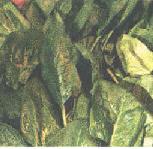
|
Strawberries:
Strawberries will grow quite well in a hydroponic garden. Most of-
ten, you will find strawberry shoots rather than seeds. These shoots
can be transplanted into your garden but be sure they are free of pests
and disease and then wash the roots thoroughly to remove all soil and
organic debris. |

|
Tomatoes:
Tomatoes are the most popular commercial hydroponic crop.
Most commercial growers grow full size, indeterminate varieties. These varieties will bear fruit in about 100 days and
continue to produce up to a year. There are miniature tomato varieties available that are perfect for a smaller hydroponic garden.
A drip system is the best method of growing tomatoes in a hy-
droponic garden but they will also grow in other systems. |

|
If you are growing tomatoes indoors, you may need to pollinate the individual flowers for fruit set to occur. This can be achieved by vibrating the flower or flower truss. As a tomato plant develops, plant support will be needed.
Like needs: cucumbers, peppers
Days to germinate: 3 -6

HOME / LAST PAGE /
NEXT PAGE










